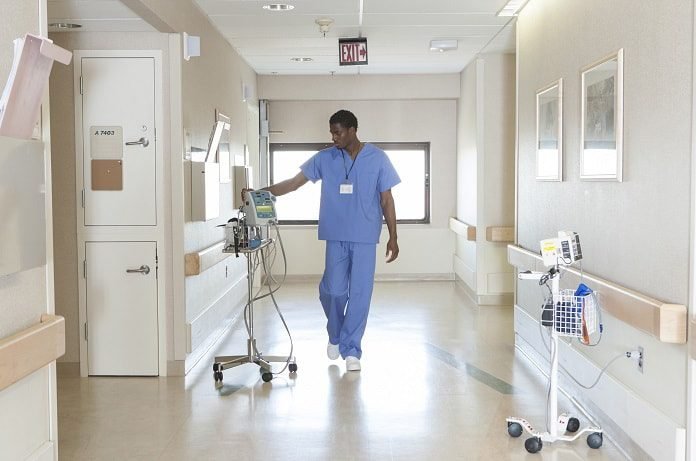Hospital acquired infections are rampant today. Understanding their origin and how they spread is key to avoiding infection. A recent study characterized bacteria found on hospital surfaces, patients and staff in a new hospital over a 1 year period.
An individual’s immune system protects them from foreign bodies and organisms. For an immune system to be strong, it needs to be exposed to as many micro-organisms as possible so sufficient immunity can be developed. However, today in the developed world people spend most of their time indoors. This containment can lead to under-developed immune systems. Microorganisms found in this confined environment are few and as a result, the incidence of immunological diseases such as allergies, asthma, and other types of immune-induced connective tissue disorders have increased.
Lax, Simon, and colleagues studied the origin and growth of bacteria found on hospital surfaces, patients and staff. Many studies have assessed bacteria present in intensive care units and neonatal departments; this study aimed to explore the hospital in its entirety. The researchers studied the bacterial diversity throughout the newly built Centre for Care and Diversity hospital under the umbrella of the University of Chicago. It is a hospital that admits patients for a wide range of medical and surgical conditions. They investigated by taking samples from different parts of the building two months before its opening and continued that for a year after its opening. In total 6523 samples were collected from multiple places in the hospital.
Researchers observed that after opening the hospital, surfaces in the lobbies and the nurse’s station seemed to carry a high number of bacteria compared to other close by surfaces such as the floor or the walls. It was interesting to note that the type of bacteria dominant at the nurse’s station was the same bacteria that is found in high quantities on the skin. Also of interest was that the pre-opening bacteria present on the nurse’s station reduced in number, while the new bacteria grew. While the number of bacteria on the nurse’s station increased, it diversified. Diversity was observed in samples of bacteria collected from the floor of the lobby.
In comparison, operating rooms (OR) contained low quantities of highly diverse bacteria mainly due to footpaths in-and-out of the OR. Moreover, the bacterial diversity and number were similar on all surfaces. Within patient rooms, the researchers checked for correlations found in bacterial diversity present on different surfaces and patients. The aim was to demonstrate potential pathways that could be responsible for the spread of hospital acquired infections. They found that the bacteria present in patient rooms matched the bacteria seen on the patient’s skin within a day of admission, with the highest amounts of bacteria found on bed-rails. Decreased movement of patients was correlated with reduced similarities between the bacteria found on the patient and bed rails.
The diversity of bacterial differed from patient to patient depending on the treatment that the patient was undergoing. Pre-admission antibiotics and chemotherapy were noted to influence the bacterial composition present on the patient. Interestingly, the researchers found that the bacterial composition of patients admitted through the emergency room was lower than patients who were admitted via physician appointment.
The results of the study are fundamental to understanding the distribution and spread of bacteria in the hospital. Additional investigation is needed to determine the various routes through which a patient can potentially contract a hospital-acquired infection. These results do chart out the beginning of a discussion that is critically important as it increases the awareness of health-care professionals to the distribution of bacteria in a hospital setting.
Written By: Dr. Apollina Sharma, MBBS, GradDip EXMD



